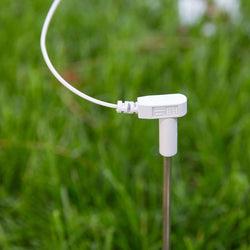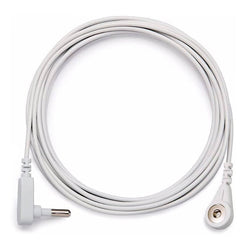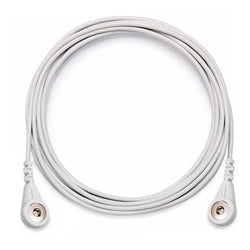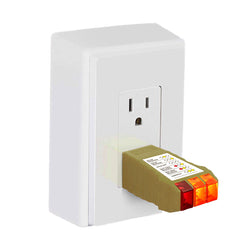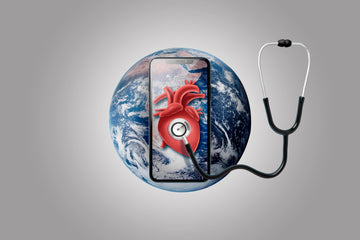Introduction: Rethinking Cholesterol Through a Grounded Lens
High cholesterol is a silent but serious contributor to cardiovascular disease—the leading cause of death globally. Despite modern medicine’s best efforts, millions still struggle with elevated cholesterol, hypertension, and heart-related complications. While statins and low-fat diets and avoidance of saturated fats have been the go-to strategies, a new wave of interest is emerging around grounding, also known as earthing grounding, as a potential ally in heart health and reduction of heart disease.
Grounding reconnects the human body with the Earth's surface, allowing a flow of free electrons that may help neutralize oxidative stress, reduce inflammation, and stabilize nervous system activity. These physiological changes are directly linked to the same biological processes involved in cholesterol production and transport. Many experts now consider grounding a universal anti-inflammatory remedy with broad health implications. This article explores the fascinating potential of grounding as a complementary tool in allowing body heal, managing cholesterol levels and promoting better cardiovascular health.
What Is Cholesterol and Why Does It Matter?
The Good, the Bad, and the Misunderstood
Cholesterol is a waxy substance found in every cell of the human body. It plays essential roles in building cell membranes, producing hormones, and supporting vitamin D synthesis. However, not all cholesterol is the same. LDL (low-density lipoprotein) of saturated fats, often labelled "bad cholesterol," can contribute to plaque buildup in arteries. HDL (high-density lipoprotein), known as "good cholesterol," helps transport LDL away from the bloodstream.
The real challenge lies in maintaining balance. High levels of bad cholesterol or low levels of good cholesterol can increase your risk of heart disease, especially when paired with chronic inflammation and stress. Yet, cholesterol itself isn't the villain—it's a vital molecule that our body relies on to heal, protect, and regulate itself. Stress, lack of exercise, and poor food sources, such as trans fats and overly processed saturated fats, can distort this natural balance, leading to a cascade of diseases.

Cholesterol’s Role in the Body
Beyond its infamous reputation, cholesterol has healing properties. When our body experiences inflammation or injury, it often increases cholesterol production as part of a protective response. However, persistent stress, poor diet, and environmental toxins can lead to overproduction, tipping the scales toward cardiovascular risk.
In conditions like familial hypercholesterolemia, genetic factors play a role. But for most of us, lifestyle medicine strategies—addressing diet and opting one with low saturated fats content, stress, movement, and now possibly grounding—can make a meaningful difference in reducing hdl cholesterol and heart disease risk. Supporting the immune system and managing stress hormones like cortisol are essential components for this balance. Additionally, specific food sources such as plant sterols and healthy fats like coconut oil can help us manage bad cholesterol levels.
Grounding 101: The Basics of Earthing
What Is Grounding?
Grounding or earthing refers to direct physical contact between the body and the Earth’s natural surface—walking barefoot on grass, swimming in natural water, or using grounding devices like mats and patches indoors. This contact allows the transfer of negatively charged electrons from the ground into your body, which may help stabilize your body’s bioelectrical state.
Grounding the human body has been shown to affect various physiological systems, particularly those related to inflammation, blood flow, and stress—all factors that influence cholesterol. The effects of grounding go beyond just relaxation—they touch deeper layers of systemic function, including heart rate variability, immune system modulation, and recovery. When electrons act as antioxidants, they support the body’s natural ability to heal and regenerate.
Mechanisms of Action
How exactly does grounding influence cholesterol-related pathways? It starts with the autonomic nervous system. Grounding techniques help shift the nervous system from a fight or flight reaction to a rest and digest state, improving heart rate variability and reducing cortisol levels. Elevated cortisol is known to raise LDL cholesterol, even if you do not overly use saturated fats, and triglycerides.
Moreover, grounding reduces blood viscosity—a key factor in cardiovascular events—by decreasing red blood cell clumping and improving circulation. These changes help the body heal, lower inflammation, and support healthier lipid metabolism over time. These benefits are especially relevant for populations dealing with hypertension, diabetes, and chronic stress. For pregnant individuals or those with hormonal changes, grounding may offer subtle but meaningful support to systemic equilibrium.
How Grounding Affects Blood Properties Related to Cholesterol
Grounding and Blood Viscosity
Blood viscosity refers to how thick or sticky your blood is. Higher viscosity makes it harder for the heart to pump blood, increasing cardiovascular risk. Studies have shown that earthing can reduce the aggregation of red blood cells, making the blood less viscous and easier to flow.
In one case history series study, grounded individuals showed thinner blood, improved flow, and more spaced-out blood cells—important indicators for reducing the risk of clots and heart disease. These findings suggest that grounding may indirectly influence cholesterol’s impact on the circulatory system. Lower blood viscosity contributes to better nutrient transport, more efficient oxygen delivery, and reduced inflammatory potential in blood vessels.
Grounding and Blood Flow
Improved blood flow is central to cardiovascular health and efficient cholesterol transport. Grounding enhances circulation by increasing red blood cell surface charge, which reduces cell clumping. This results in smoother, more efficient movement of blood through vessels.
Better circulation allows oxygen and nutrients to reach tissues more effectively and supports the removal of waste products, including oxidized LDL obtained from saturated fats. This could play a role in preventing atherosclerosis, a condition marked by fatty deposits in artery walls. Additionally, improved blood flow helps deliver immune cells to sites of damage or infection, reinforcing the role of grounding in promoting better health outcomes.
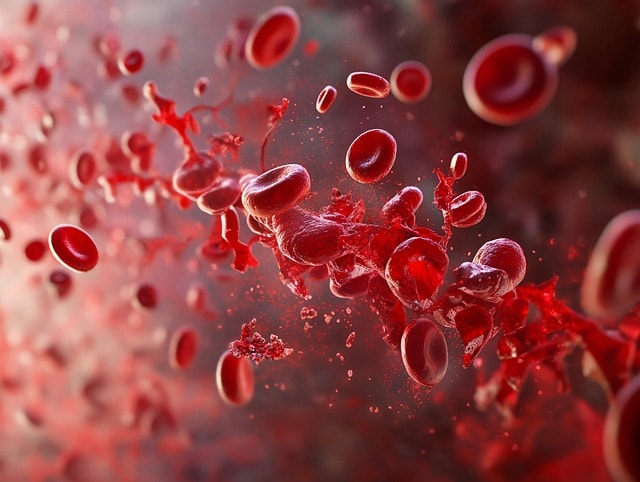
Inflammation, Cortisol, and Cholesterol: The Grounding Connection
The Inflammation-Cholesterol Loop
Inflammation is the common denominator in most modern chronic illnesses, including high cholesterol and heart disease. It signals the liver to produce more cholesterol as a protective response. Unfortunately, when inflammation becomes chronic, this response turns from protective to harmful.
Grounding appears to interrupt this loop. A growing body of research evidence suggests that grounding reduces inflammation markers (such as CRP and cytokines). By calming the immune response, grounding may reduce the need for elevated cholesterol production. The combination of reduced inflammation and improved cortisol regulation presents a potent therapeutic option in preventive medicine.
Cortisol, Stress, and Lipid Metabolism
Stress increases your cortisol, which in turn can raise LDL levels, promote abdominal fat storage, and impair insulin sensitivity. Grounding has been shown to normalize cortisol rhythms, especially when practiced regularly over a 24-hour cycle using grounding sheets or mats.
Lower cortisol also means reduced sympathetic nervous system activation, which may lower high blood pressure and improve lipid metabolism. For many grounding patients, this results in better stress regulation and, over time, a more favourable cholesterol profile. This mechanism may explain why hypertension improves blood pressure more easily when the stress response is managed through grounding and other lifestyle tools.
Emerging Research and Expert Opinions
Studies Linking Grounding to Cardiovascular Markers
Several landmark studies highlight grounding’s positive effects on cardiovascular health. Dr. Gaétan Chevalier and Dr. Ghaly found that grounded participants experienced improved heart rate variability, lower blood viscosity, and reduced inflammation. These shifts are closely tied to cholesterol balance and reduced heart disease risk.

Dr. Laura Koniver, a holistic physician, notes that “grounding allows the body to enter a state of repair and regeneration,” supporting metabolic and cardiovascular functions that directly affect cholesterol. These clinical observations are being taken seriously in complementary medicine circles, even if large-scale trials are still pending. Moreover, grounding's affordability and accessibility make it an attractive public health intervention.
Expert Insight (EEAT Element)
Dr. Stephen Sinatra, a board-certified cardiologist and co-author of Earthing, says: “In my 40 years of practice, grounding is one of the most promising natural strategies I’ve encountered for supporting cardiovascular health. The positive effects on blood viscosity, inflammation, and autonomic tone are profound.”
These expert insights affirm that while grounding may not replace medications, or avoidance of saturated fats,it could serve as a powerful complement—especially in preventive medicine and holistic healing. Sinatra also emphasized that grounding plays a role in improving metabolic flexibility and the body's capacity to regulate cholesterol production without relying entirely on pharmaceutical intervention.
Can Grounding Lower Cholesterol Naturally?
Current Evidence and Limitations
To date, no human study has directly measured grounding’s effect on LDL or HDL cholesterol levels. However, grounding's proven ability to reduce inflammation, balance cortisol, and improve blood flow offers a compelling case for its indirect benefits on cholesterol regulation.
It’s important to acknowledge the limitations: we need more randomized controlled trials and longitudinal research. Yet the growing base of case studies and subjective reporting continues to point toward very beneficial effects.
Compared to other therapies, grounding is safe during pregnancy and aligns well with holistic health models emphasizing body connection, stress resilience, and better health through nature.
A Complementary Strategy
Grounding should not be seen as a silver bullet for any disease or condition but rather as part of a broader set of lifestyle medicine strategies. It works best alongside whole-food diets, stress reduction techniques, regular physical activity, and proper sleep hygiene. Together, these practices help reduce inflammation and rebalance cholesterol naturally.
Compared to other forms of alternative medicine—like acupuncture, sauna therapy, or meditation—grounding is unique in its simplicity and accessibility. There are no complicated techniques, just direct contact with natural ground or conductive tools.
This makes it a valuable tool for enhancing cardiovascular wellness, especially in individuals with a family history of heart disease or diabetes.

How to Get Started With Grounding for Heart Health
Outdoor Grounding
The most intuitive way to practice grounding is by walking barefoot on natural surfaces such as grass, sand, or soil. Even 20 minutes a day can make a difference. Gardening with bare hands or swimming in lakes and oceans also helps the body absorb electrons from the Earth.
These grounding techniques not only connect you to nature but help stabilize stress levels and support emotional health, both of which are tied to cholesterol and overall cardiovascular wellness. These effects of earthing, or grounding, also extend to balancing energy levels, improving immune system efficiency, and enhancing sleep recovery—all contributing to cardiovascular resilience.
Indoor Grounding Tools
For those of us who live in cities or have limited outdoor access, grounding mats, patches, and earthing sheets provide an effective indoor solution. These tools connect to grounded outlets or external grounding rods and allow users to stay grounded during work or sleep.
Grounding patches and mats are especially useful during colder months or for people with mobility issues. These tools also make it easier to maintain earthing routines for individuals managing chronic disease, including diabetes and hypertension.
Consistency and Duration
For best results, earthing/grounding should become a daily habit. Most practitioners recommend 30 to 60 minutes per day. To track changes, you can monitor blood pressure, sleep quality, or heart rate variability using wearable devices.
Over time, consistent grounding may lead to reduced cortisol levels, improved autonomic tone, and even reductions in chronic pain and stress—all factors that support healthy cholesterol levels. Encouraging daily earthing is a simple step that supports better health outcomes at both the personal and population levels.

Addressing Safety and Misconceptions
Is Grounding Safe for People on Statins or With Heart Conditions?
Grounding is considered safe for most people, including those taking medications for cholesterol or blood pressure. It doesn’t interfere with statins or other treatments. However, individuals with serious medical conditions or implanted devices should consult a healthcare provider before starting any new therapeutic practice.
Safety extends to those in sensitive states such as pregnancy or recovering from surgery. Because grounding works with the body's natural energy systems rather than introducing external substances, it offers a low-risk addition to wellness routines that support heart and metabolic health.
Debunking Myths
Contrary to some misconceptions, grounding does not expose you to electromagnetic fields—in fact, it may reduce induced human body voltage by discharging static electricity. It’s not dependent on sunlight, high-tech gadgets, or even being outdoors all the time. Grounding simply requires contact with the Earth—or a properly grounded surface. And NO, grounding cannot give you electrical shock!
Earthing is also not a form of mysticism; it’s increasingly viewed through the lens of evidence-based preventive and complementary medicine. The idea that electrons act as antioxidants is supported by emerging studies in biophysics and cellular health.
Grounding as a Heart-Centered Wellness Practice
Grounding is more than just a wellness trend—it’s a scientifically grounded practice with measurable benefits for inflammation, stress, and better heart health. While we await more direct clinical applications to cholesterol, the existing evidence paints a compelling picture of how grounding may improve the body’s internal environment for lipid regulation.
By integrating grounding with a cholesterol-conscious diet rich in plant sterols, minimizing saturated fats, increasing physical activity, and managing stress, you can create a comprehensive, natural plan for heart health, even if you already suffer from heart disease.
Try a 30-day grounding challenge! Walk barefoot daily, use Earthing Harmony´s grounding mat, shoes or sheets, and observe how your sleep, blood pressure, and energy change. Small steps toward the Earth may just lead to big changes in your health and a better understanding of how the human body responds to natural support systems.

Frequently Asked Questions About Grounding and Heart Health
1. What are the negative effects of grounding?
For most people, grounding is completely safe and free from side effects. However, individuals who are highly sensitive to energy shifts or electromagnetic fields may initially experience temporary symptoms such as tingling, fatigue, or emotional release during their first few sessions. These sensations are usually mild and short-lived, often reflecting the body’s adjustment as electrons neutralize inflammation and restore balance. People with pacemakers or other implanted electrical devices should consult their healthcare provider before using grounding tools to avoid interference. Overall, the effects of grounding are considered beneficial in the realm of preventive, alternative and complementary medicine.
2. How long does it take for earthing to reduce inflammation?
The timeline varies by individual, but early studies and anecdotal reports show that some people begin to notice reduced inflammation and related symptoms—such as pain and swelling—within just a few days of consistent grounding. In one controlled study, grounding reduced levels of inflammation-related markers in blood samples within a single night of sleep. For chronic conditions, the benefits may unfold more gradually over several weeks. Because earthing enhances immune system function and supports the body’s innate healing processes, consistent daily practice is key. The longer and more regularly you practice earthing, the more noticeable its anti-inflammatory effects become.
3. Does grounding affect blood pressure?
Yes, grounding has been shown to influence arterial pressure by supporting the body’s parasympathetic (relaxed) nervous system response. By reducing cortisol and calming emotional stress, grounding may help lower high blood pressure over time. In clinical observations, individuals practicing regular earthing experienced improvements in heart rate variability and reductions in blood viscosity—both of which are linked to healthier cardiovascular function. While grounding should not replace your medication, it may work alongside other interventions. It’s particularly promising for us seeking lifestyle-based methods where hypertension improves pressure naturally, without reliance on pharmaceuticals alone.
4. Is earthing good for your heart?
Absolutely. Earthing supports heart health through multiple mechanisms. It improves blood flow, lowers inflammation, reduces stress hormones like cortisol, and enhances the body's ability to regulate itself. Studies have also indicated better heart rate variability and decreased red blood cell clumping in grounded individuals—key factors in preventing heart problems. Because earthing grounding connects your body to Earth's negative charge, it may also mitigate oxidative stress, a contributor to arterial plaque and heart disease. These combined effects make grounding a powerful tool for anyone seeking to support their heart naturally. Remember to stay away from saturated fats though.
5. How many minutes a day should you do earthing?
Most practitioners recommend grounding for at least 30 to 60 minutes per day to achieve noticeable physiological benefits. For beginners, even 20 minutes of barefoot walking or contact with the Earth’s surface can make a difference. The key is consistency. Using grounding mats or sheets while sleeping or working can help extend exposure passively. As grounding promotes better health by regulating stress and improving immune function, a daily routine—just like exercise or healthy eating—becomes essential to maximizing long-term results.
6. Can grounding help lower cholesterol levels?
While grounding has not yet been proven to directly reduce LDL cholesterol in clinical trials, it plays a powerful indirect role. By reducing systemic inflammation, lowering cortisol, and enhancing blood flow, grounding helps create an internal environment less conducive to high cholesterol production. The practice also supports healthier lipid metabolism, especially when combined with heart-healthy food sources like plant sterols, fiber-rich vegetables, and healthy fats such as coconut oil to boost hdl cholesterol. Grounding is not a substitute for medical treatment, but it’s a valuable adjunct to lifestyle strategies focused on cholesterol balance.
7. Is grounding safe during pregnancy?
Yes, earthing is generally considered safe whilst expecting a baby. It may even offer particular benefits during this time, such as improved sleep, reduced swelling, and better stress regulation. By helping manage emotional stress and lowering inflammation, grounding may support both maternal and fetal well-being. That said, pregnant individuals should always speak with their healthcare provider before beginning any new therapeutic practice. The natural connection to Earth’s energy can be a gentle way to enhance overall vitality during this important stage of life.
8. Why is grounding relevant to public health?
Grounding offers a simple, low-cost, and accessible method for improving a wide range of health markers—making it a promising intervention in the field of health management. In a society burdened by chronic disease, stress, and inflammation-related conditions, grounding stands out as a natural tool that supports immune health, heart function, and emotional resilience. Its ease of use—no prescriptions, no expensive devices, no side effects—means it can be practiced by almost anyone, anywhere. As research evolves, grounding may prove to be one of the most underutilized, yet powerful, preventive strategies available today.
Explore our selection of grounding products and choose your favourite today - is it shoes, sandals, mats or sheets?







 Shoes
Shoes
 Boots
Boots
 Sandals
Sandals

 Shoes
Shoes
 Boots
Boots
 Sandals
Sandals




